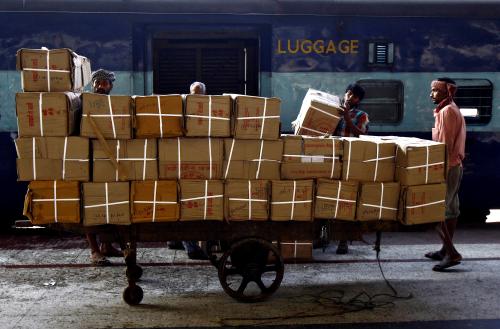About half a decade ago, I visited Lahore, Pakistan to assess the fiscal sustainability of the State of Punjab. During my visit, I witnessed a rather curious phenomenon: electricity went off for exactly three seconds every half hour, every day, every week. This mysterious rhythm, which at first did not seem to bother anyone, was the authorities’ attempt to balance a short power supply by periodically resetting the demand on the grid. A “load shedding,” the locals called it.
It turned out that I was wrong about the tolerance of people. Soon after my arrival, widespread protests broke out. With elections in sight, the provincial government of Punjab and the national government in Islamabad, who were from competing parties, blamed each other for not investing enough to resolve the problem. My local guide said, “When elephants fight, it is the grass that suffers,” referring to the inefficient outcome of a warped political competition.
Motivated by this example, Cem Karayalcin and I analyzed the nature of investment inefficiency in federations and other types of economic unions (e.g., the European Union). The focus was on situations where investments in one member can potentially have benefits for other members, but those members have no say in making decisions outside their jurisdictions. An oft-mentioned example in this case is railway gauges: If regions, or countries, install different track gauges (e.g., narrow, standard, or wide), then each region/country effectively becomes an island. When that happens, freight and passengers need to be first unloaded and then reloaded to a different train car at the border to continue their journey. But why should a country install a specific type of railway gauge if it has benefits for its neighbors but costs more?
In cases where countries mutually suffer from their neighbors’ selfish investment choices, the solution is relatively straightforward. A quid pro quo approach, perhaps even delegating investment decisions to a supra-national body (we called this “complete integration”), can quickly increase and synchronize investments to a mutually beneficial level. The benefits of such regional integration were previously discussed by Shanta Devarajan in a thought-provoking blog. We discovered additional channels through which such benefits may be manifested.
- Investments are higher in complete integration cases and they are also easier to finance by debt issuance. When investments are higher, member states enjoy greater incomes. This makes a default costlier for the union (otherwise, a greater share of that income can be captured) and debt repayment a better option. Consequently, investors are willing to lend more—more than the sum of what they would lend to member states—to a centralized authority. Overall, the union can implement projects that individual members would not choose and could not finance by themselves.
- Complete integration schemes can also limit the contagion of debt distress among its members. When one member faces a negative shock (e.g., lower returns to investment), without restraints, it could reduce public investments and default on its debt. These could also push its neighbors to default (as their income is affected by the investments in the original shock-receiving country). A central authority, in a complete integration case, could perform a risk-sharing function by “transferring” resilience from other members in this case: a default may be avoided for it is too costly for the union. This is not to say that complete integration schemes are invincible to shocks. They are simply more resilient.
The problem is that benefits and costs from such integration schemes are rarely proportional across countries. This is Shanta’s 800-pound gorilla problem: When there are significant asymmetries between potential gains from integration, “large” economies may have little to gain from integrating. However, this may not be a major impediment, as those countries would also face lower costs from such endeavor. Aaditya Mattoo, on the other hand, emphasizes the inability of the “large” economy to commit to cooperative behavior in bad times, which then makes “small” economies refrain from undertaking costly and somewhat irreversible actions for integration.
In our framework, the “narrow band of cooperation” is determined by two gaps between countries: initial income levels and productivity of investments. Without a productivity gap, it is the rich country that needs to be convinced to join a union: its benefits from integrating (coordinating investments) should exceed its costs (an effective redistribution from richer to poorer country by means of taxes and investment). However, if the low-income country has greater productivity, then it may also not consider integrating if the income gap is not large enough. In this case, the immediate benefits from integration for the low-income country (coordinating investments and an early redistribution) may be outweighed by its future costs (a reverse redistribution).
Together, these results show that there is scope for further regional integration and infrastructure cooperation, but this is a bounded scope that does not always fit the bill. In Pakistan, for instance, an average citizen nowadays continues to face six hours of load shedding per day. But newspapers recently announced that there’s no load shedding in Prime Minister Imran Khan’s residence in Lahore as local authorities installed two feeders to ensure uninterrupted supply of electricity, making the residence officially a load-shedding-free area.




Commentary
Building beyond borders
December 11, 2018